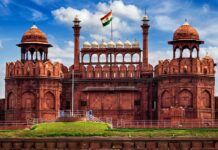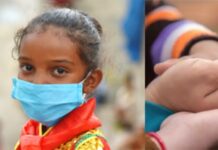It’s almost 15 months since Prime Minister Narendra Modi announced India’s first short lockdown at just four hours’ notice followed by a 21-day lockdown to beat Covid-19 Coronavirus that had burst upon the country. Millions of workers in cities across the nation found themselves jobless, trudging back to their village homes hundreds of kilometers away.
Plenty of murky water, including half cremated bodies, has flown down the holy Ganges since then while the country is counting the number of lives already lost and dreading more losses that may lie ahead. By the middle of June this year, the national death toll had logged a total of 3.77 lakh and still climbing. The tally of deaths and cases from Jharkhand, Chhattisgarh, Arunachal Pradesh, and Ladakh is still awaited for lack of accessibility and other considerations.
Nevertheless, the biggest relief for the common man and woman has come with the Prime Minister’s declaration on June 7 that vaccines will be provided free of cost to all adults at all government hospitals and facilities. The government will take care of all expenses. It marked the reversal of earlier policy of leaving the procurement of vaccines to individual states by floating global tenders. Albeit it came after the Supreme Court’s prodding, it is welcome all the same. The government would also take care of the state quota of procurement of vaccines. Also in the pipeline is the hope of all citizens getting at least one dose by the end of this year
The fight against the pandemic through vaccinations, sadly, has been marked with a series of hits and misses. Early on we were so confident of conquering Coronavirus that we even exported a few million vaccines. We were equally confident that our pharma industry giants like Serum Institute of India in collaboration with Oxford Astra Zeneca would easily see us through any difficulty. But soon the reality struck and we have been virtually left high and dry ourselves.
On top of all this, we had no clear policy for the procurement of vaccines. It was left to individual states to float tenders abroad for vaccines but soon found that foreign companies were not interested in dealing with individual states. Thus came the reversal of our procurement policy on the seventh of this month when Prime Minister Modi declared in his televised message that the Central government would take over the responsibility of procuring 75 percent of vaccines and provide free to the states. The remaining 25 percent could be sourced and distributed by the private sector. A belated course correction but better late than never… The Prime Minister, never the one to admit any mistake, tried to shift the blame on to the states by saying that it was the states themselves that wanted to procure vaccines on their own. But it won’t wash.
Then there is the massive under-reporting or under-counting of fatalities lying hidden in the country’s underbelly. Our perennial habit of underestimating our losses can be mind-boggling. To cite just the example of Bihar where the government added nearly 4,000 deaths (3,971 to be exact) to its tally of fatalities in one fell swoop last week taking the total from 5,458 to 9,429, fueling doubts over actual deaths in the entire country. Little wonder that a report in London’s ‘Economist’ weekly estimated India’s Covid death toll at over one million against the Indian estimates of about 3.77 lakh.
Never mind the mistakes gone by. The battle ahead for procuring and securing adequate supplies of vaccines is pretty tough, to say the least. For the immediate present, we have access to only three manufacturers or suppliers. They are the Pune-based Serum Institute of India, the producer of Oxford Astra Zeneca brand, followed by Hyderabad-based Dr. Reddy’s Bharat Biotech/Apollo group and Russia’s Sputnik V in that order of supplying capacity. Orders have been placed with others too like Biological E, with more possibly in the pipeline. As many as seven companies are engaged in the production of vaccines and trials of three more vaccines are in advanced stages. Trials for two vaccines for children and research on a nasal vaccine are also underway.
“Altogether 74 crore doses have been secured for use from August onwards,” according to Dr. V K Paul, chairman of the National Empowered group on Vaccination. He was speaking at a press conference on June 8, a day after the Prime Minister’s televised address to the nation. Until July, 53 crore vaccine doses – including 23.5 crore already administered – were expected from Serum Institute and Bharat Biotech.
India has a target adult population of 94 crore that is eligible for vaccination (two doses each) while by mid-June this year’s only about 3.5 percent of people have been fully vaccinated, receiving both doses. Another 15 percent of the population has received one dose each. The gap between the actual availability of vaccines prime and promise is yawning! Several vaccination centers have been shut from time to time because of a shortage of supplies.
Also, there is the issue of the pricing of vaccines when available. Thankfully the muddle that lasted over the first full year has just been resolved if implemented as promised by the government. The maximum price for the Indian Covaxin and the Oxford Covishield has been fixed at Rs 1,410 and Rs 780 per dose respectively, while Russia’s Sputnik V will cost Rs 1,145 per dose at private hospitals. Bharat Biotech is complaining about the low price being paid to it.
The challenge ahead is daunting but the vaccination drive appears to be on the right track after the government’s course correction this month.
Disclaimer: We do undertake rigorous checks on content provided by contributors before publishing the same. If you come across some factual errors, kindly bring this into our notice and we shall review your objection and claim as per our policy and display correction credits and corrections on the article itself.
The opinion expressed in the article is of the writer. Writer is a freelance journalist/journalist based in Delhi




























